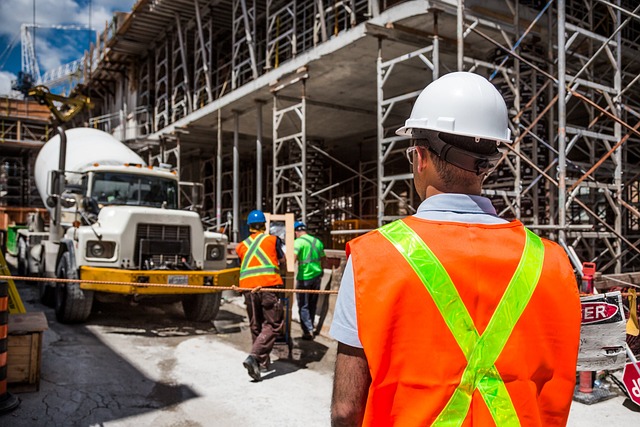
Scaffolding safety is incredibly important. We've used our safety harness expertise to put together some scaffolding safety tips. You'll need more than a scaffolding harness to keep you safe if you are working at height. Pay attention — these safety tips might keep you safe the next time you're on site.
1. Check Your Scaffolding Construction Materials
The first rule of scaffolding safety is that the scaffold itself needs to be safe! Before you build your scaffold and get to work, it's vital that you check the materials you will be using to build your scaffolding tower. You want to be sure that nothing is broken or too worn. You wouldn't use a ladder or a safety harness if it was damaged, so don't use a scaffold tower if you're not 100% sure that it's safe. The consequences of using a damaged or faulty scaffold tower could be fatal, so inspect every pole, platform, and connection. If you find any problems with the equipment, report them immediately.
Do not climb a scaffolding tower if it is damaged in any way, as this is never safe.
When you're working at height on scaffolding, stay vigilant. One of the biggest risks to scaffolding safety is that the structure you're standing on may not be stable. When you're constructing a scaffold tower, follow the manufacturer's instructions carefully. If you suspect that a part is missing or not built correctly, rectify this before you start work.
The ground that the scaffold tower is built on should be completely level and free of debris. Try to ensure that the work area is out of the way of hazards such as power lines. You should also follow the HSE guidelines when building or using scaffolding and scaffold towers. Take a look at some of those scaffolding safety guidelines below:
- Check that leg braces have been installed to support the base of the scaffold tower.
- Ensure that all planks and boards are completely level and secure.
- Make sure there's a suitable clearance between the work platforms and external hazards (e.g. power lines).
- Remove tools and equipment that aren't being used so that they don't fall on people below.
2. Get Scaffolding Safety Training
Scaffolding safety is a matter of the right people doing the right job with the right equipment. In order to follow proper scaffolding safety procedures, only trained and experienced workers should be working on scaffolding towers. It's absolutely vital that you understand the potential hazards involved when working at height because you need to be able to react quickly in challenging situations. Everyone who's working on the scaffolding should have a good understanding of the emergency procedures so that no one is left in a dangerous situation longer than they need to be.
To make sure you understand how dangerous working at height can be, read: Working at Height.
3. Check Conditions Are Safe for Scaffolding Work
Working on scaffolding in adverse weather conditions can also make things more dangerous than usual. Windy conditions could increase the chances of materials or equipment falling from the scaffold and make the whole structure less stable, which is a serious problem when working at height! Wet conditions could make scaffold boards slippery, potentially leading to slips and falls. Storms can also cause unexpected hazards such as fallen power lines — so it's important that you carry out a thorough risk assessment before you climb the scaffolding to begin work.
4. Use Scaffolding Safe PPE
Using the right equipment and PPE will help ensure maximum scaffolding safety. You should wear a safety harness at all times, and use scaffolding PPE that should include:
Wearing the correct PPE and investing in the height safety equipment we've outlined above will help make sure you can work effectively and safely while on a scaffold. You should never attempt to work on scaffolding without the correct PPE — you could find yourself in a very dangerous situation!
Here at Safety Harness Direct, we supply a wide range of height safety equipment that will enable you to work at height safely on scaffolding. If in doubt, always speak to the site manager before undertaking any work on scaffolding.
Browse Scaffolding Safety Harnesses >

